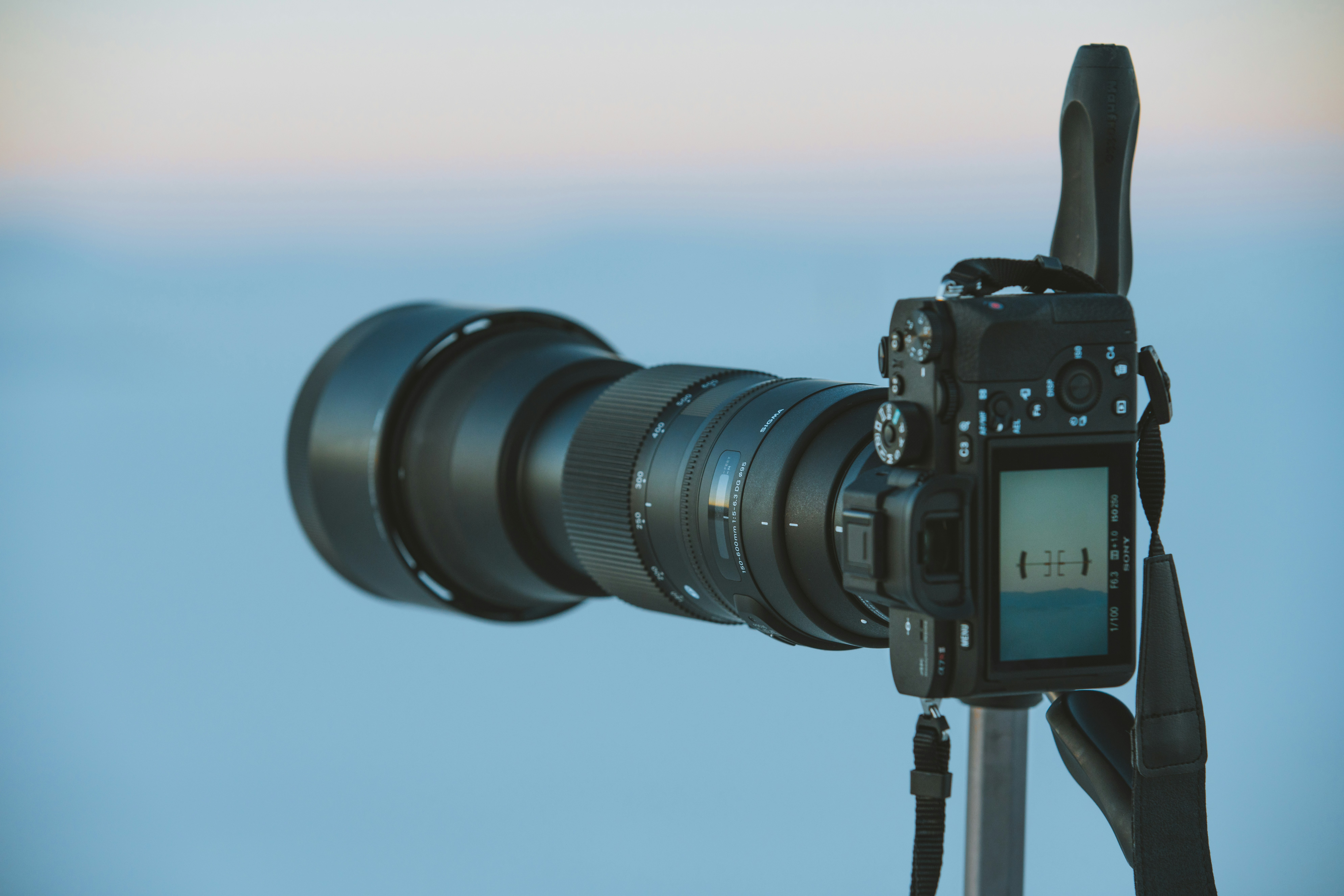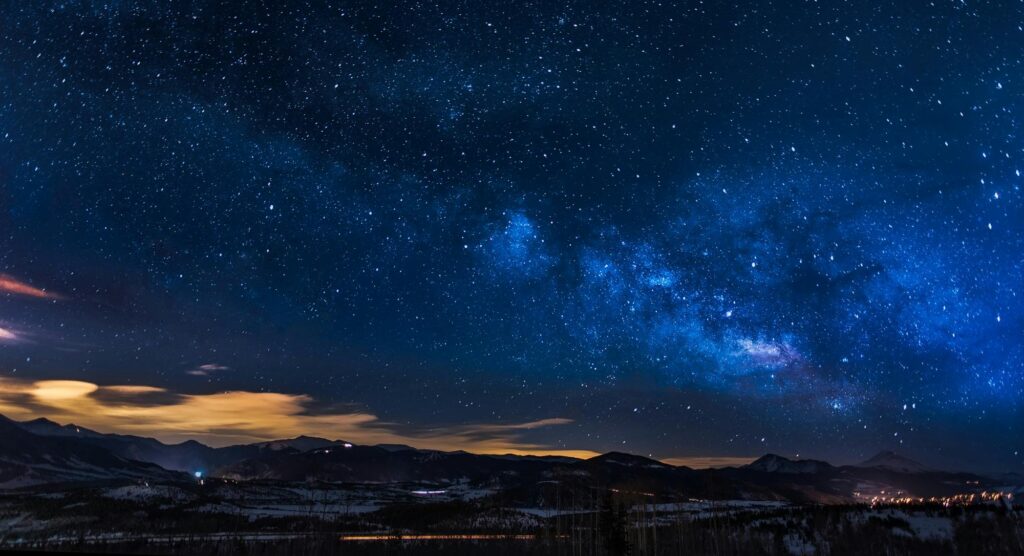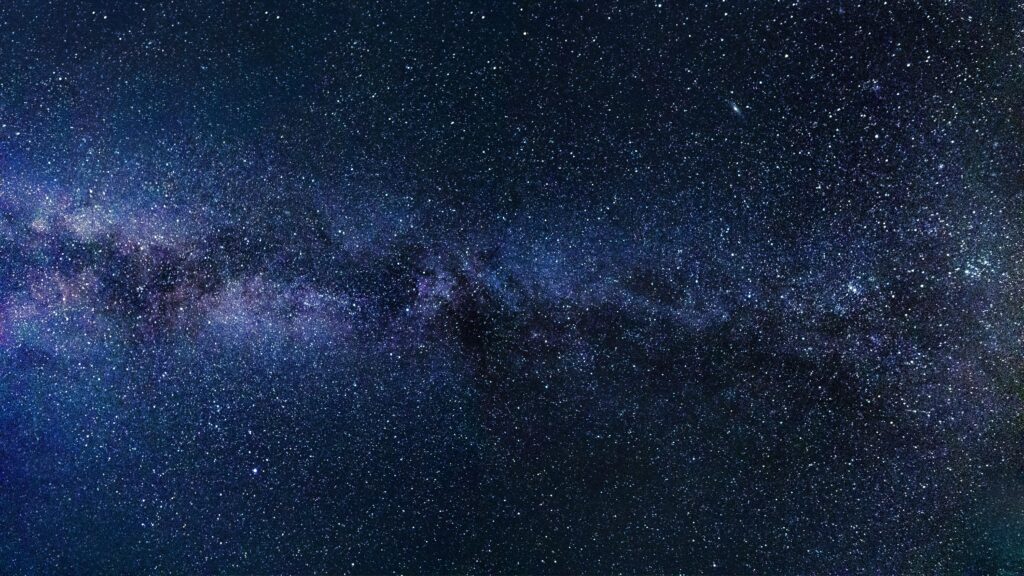Introduction to Astrophotography
Astrophotography is a specialized field of photography that focuses on capturing images of celestial objects and phenomena. This genre of photography enables enthusiasts and professionals alike to document the beauty of the night sky, including stars, planets, galaxies, and various celestial events such as meteor showers and eclipses. Over the years, interest in astrophotography has surged, driven largely by advancements in technology and a growing curiosity about the universe. As more individuals become aware of the wonders that exist beyond our planet, outfitting themselves with the right equipment to capture these breathtaking images has never been easier.

One of the fundamental principles of astrophotography is the need for low-light conditions. As celestial objects often emit very little light, capturing their subtle details requires a camera and lens capable of performing exceptionally well in dim lighting. Traditional photography techniques such as using longer exposure times, wide apertures, and high ISO settings become crucial when aiming to highlight the intricate characteristics of distant stars and planets. These techniques allow photographers to maximize the amount of light collected by the camera sensor, which is essential for producing clear and vibrant astrophotographs.
Additionally, advancements in camera technology have played a pivotal role in making astrophotography more accessible to a wider audience. Modern digital cameras, especially those designed for long-range and low-light photography, incorporate sophisticated features such as image stabilization, enhanced noise reduction, and specialized sensors. These innovations enable users to capture high-quality images with less equipment and technical expertise than before. As a result, hobbyists and professionals can engage in astrophotography, as it becomes not only a viable pursuit but also a fulfilling way to connect with the cosmos.
Understanding the Night Sky and Celestial Objects
Astrophotography offers enthusiasts a unique opportunity to capture the beauty of celestial objects, which include stars, planets, and galaxies. Each of these entities exhibits distinct characteristics that can be photographed under varying conditions. Understanding these differences is essential for anyone looking to embark on night sky photography.

Stars are the most numerous objects in the night sky. They vary significantly in brightness, size, and color, influenced by their stage of life. A clear understanding of their positions is crucial, and utilizing star charts can aid in identifying prominent constellations and standalone stars. For example, stars such as Sirius and Betelgeuse can be easily located, providing ideal subjects for amateur photographers.
Planets, unlike stars, do not emit their own light; rather, they reflect sunlight. This makes them more challenging to photograph. Depending on the time of year, varying planets will be visible in the night sky. For instance, Jupiter and Saturn are usually best seen in the fall months. Photographers are encouraged to track planetary movement and capture them during their peak visibility. Techniques such as long exposures can enhance the clarity of planet images, capturing their unique features like Saturn’s rings.
Galaxies, on the other hand, present a whole different dimension of astrophotography. They are best seen far away from city lights and during specific seasons, particularly in the spring and summer months. The Andromeda Galaxy and the Milky Way are among the most popular targets. For best results, photographers must be familiar with celestial navigation, enabling them to locate these vast collections of stars accurately.
Ultimately, successful astrophotography hinges on knowing what celestial objects to photograph, when to capture them, and how to interpret star charts to navigate the night sky effectively.
Essential Gear for Astrophotography
Astrophotography, the art of capturing celestial objects and phenomena, necessitates specific equipment to achieve optimal results. The selection of proper gear directly influences the quality of images acquired during long exposures and low-light conditions. At the core of this setup is the camera itself; while a DSLR or mirrorless camera is commonly recommended due to their adjustable settings and superior sensor performance, even high-quality compact cameras can yield satisfactory results for beginners. Users should prioritize cameras that perform well at high ISO settings, as this capability is essential for night photography.
Equally important is the lens employed in astrophotography. A wide-angle lens is favored for capturing expansive views of the night sky, as it allows for greater light intake and displays more stars and constellations within a single frame. Ideally, a lens with a large maximum aperture—such as f/2.8 or lower—offers better performance in dim light. Achieving sharp images during long exposures requires stable support; thus, a sturdy tripod is indispensable. A good tripod should withstand wind and vibrations while being adjustable to various heights and angles, ensuring clarity in every shot.
Additional accessories enhance the astrophotography experience. Remote shutter releases minimize camera shake during exposure, while intervalometers can automate the shooting process for time-lapse sequences. Light pollution filters prove beneficial in urban settings, helping to improve contrast and clarity by reducing unwanted artificial light. Finally, a camera backpack designed for snugly fitting all equipment offers safe and convenient transportation to remote locations, making it easier to explore diverse night sky panoramas. In summary, investing in quality gear tailored for astrophotography lays the foundation for capturing breathtaking celestial wonders.
Camera Recommendations for Astrophotography
When venturing into the realm of astrophotography, selecting the right camera is paramount. Among the most recommended models for capturing the night sky are the Sony Alpha 7 III, Canon EOS R, and Nikon D7500, each offering unique features tailored for low-light performance and astrophotographic endeavors.
The Sony Alpha 7 III is often favored by astrophotographers thanks to its full-frame sensor, which excels in low-light conditions. This camera boasts an impressive ISO range that enables users to capture stunning images of celestial bodies without excessive noise. The Dual AF system also contributes positively by ensuring sharp focus even in dark environments. Users often highlight the camera’s robust image stabilization feature, which greatly aids in obtaining steady shots, especially during longer exposures.
- SONY USA Authorized Model Includes Full USA SONY Warranty. 1 – Sony Alpha a7 III Mirrorless Digital Camera with 28-70mm …
- The device is equipped with a 24.3MP APS-C Exmor APS HD CMOS Sensor and utilizes a BIONZ X Image Processor.
- Hybrid AF System with 693 Points | Video Quality of UHD 4K30p with HLG and S-Log3 Gammas
Another notable contender is the Canon EOS R, a mirrorless camera that combines advanced technology with excellent usability. With its 30.3-megapixel full-frame sensor, this model delivers remarkable detail and depth, which are essential when photographing star fields or nebulae. The EOS R’s adaptable lens mount gives users the flexibility to attach various lenses suited for astrophotography. Enthusiasts appreciate the camera’s easy-to-navigate interface and customizable settings that make it a popular choice among both amateurs and seasoned photographers.
- Included Items: 1 x Canon EOS R Mirrorless Camera with 24-105mm f/4-7.1 Lens, 1 x SanDisk SecureDigital 64GB Extreme PRO…
- The first step in Canon’s mirrorless evolution, the EOS R pairs a redeveloped lens mount and updated full-frame image se…
- The combination of these technologies offers a wide sensitivity range up a native ISO 40000, fast continuous shooting to…
Lastly, the Nikon D7500 offers a compelling option for entry-level to intermediate astrophotographers. This DSLR camera features a 20.9-megapixel sensor coupled with an extensive ISO range, making it capable of recording dynamic night sky images. Users often commend its durability and weather-sealed body, allowing for continuous shooting under varying environmental conditions. The D7500 also incorporates a 51-point autofocus system, enhancing the ability to achieve precision focus despite the challenging lighting encountered during nighttime photography.
- This Camera Bundle Items Includes: Nikon D7500 DSLR Camera Import Model With 1 Year Exclusive Dealer Warranty, With Niko…
- 3pc Filter Lens Set: UV, PL And FLD, SanDisk Ultra 64 GB Memory Card, EN-EL15a Rechargeable Lithium-Ion Battery, Nikon M…
- Nikon DK-5 Eyepiece Cap, DK-28 Rubber Eyecup, Nikon BF-1B Body Cap, Nikon 67mm Snap-On Lens Cap, Nikon LF-4 Rear Lens Ca…
In essence, selecting between the Sony Alpha 7 III, Canon EOS R, and Nikon D7500 will depend on individual preferences and requirements. All three cameras present advantageous features tailored for astrophotography, facilitating the ability to effectively capture the enchanting beauty of the night sky.
Setting Up Your Camera for Night Photography
Setting up your camera for astrophotography is a critical step in achieving stunning night sky images. To begin with, using manual mode on your camera is essential, as this allows you to control the vital settings that affect the outcome of your photos. The key settings to focus on include ISO, exposure time, aperture, and white balance.
ISO settings determine the camera’s sensitivity to light. For astrophotography, a higher ISO value is typically required due to the low light conditions. Values between 1600 and 3200 are commonly recommended, but you may need to adjust according to the presence of ambient light and your camera’s performance. Using a lower ISO reduces noise; however, if your camera handles noise well, don’t hesitate to push the ISO higher for better exposure.
Next is the exposure time, which refers to how long the camera’s sensor is exposed to light. A longer exposure time can capture more light from celestial objects, ranging from 15 to 30 seconds is often ideal, depending on your focal length and movement of stars. It’s crucial to avoid star trails unless that is your intention. To achieve sharp images, consider using the “600 Rule,” which involves dividing 600 by your lens’s focal length to determine your longest exposure time in seconds.
Aperture plays a significant role in astrophotography as well. A wider aperture (smaller f-number, e.g., f/2.8 or wider) allows more light to enter, making it suitable for low-light conditions. However, be cautious, as too wide an aperture can lead to a reduction in sharpness around the edges of your frame. Adjusting your aperture effectively can significantly influence the clarity of celestial features.
Lastly, setting the correct white balance is essential to avoid unwanted color casts in your images. A value around 3500K to 4000K generally provides a good starting point, but feel free to experiment and post-process for the best results. By carefully adjusting these settings based on the specific atmospheric conditions, you can ensure that your astrophotography is both captivating and technically sound.
Techniques for Capturing Stars and Galaxies
Astrophotography presents unique challenges, necessitating specific techniques to successfully capture the beauty of stars and galaxies in the night sky. One of the primary techniques involves long-exposure photography, which allows the camera to collect light over an extended period. By increasing the exposure time, astrophotographers can reveal faint celestial objects that are otherwise invisible to the naked eye. However, this method requires steady equipment to prevent blurriness, necessitating the use of a sturdy tripod or a tracking mount to compensate for the earth’s rotation.

Another effective approach is image stacking, where multiple exposures of the same scene are combined to create a single, highly detailed photograph. This technique significantly reduces noise, as random noise patterns in multiple images tend to cancel each other out when combined. Photographers can use software tools to align and stack images, enhancing the overall quality and detail of the resulting photograph. Careful consideration of the number of images stacked is crucial; more images typically result in better noise reduction and detail enhancement.
Utilizing tracking mounts allows for a more refined photographic experience. These mounts automatically adjust the camera’s position to track celestial objects as they move across the sky, enabling longer exposures without star trails. This is particularly beneficial for capturing deep-sky objects, such as galaxies and nebulae, which require longer exposure times to unveil their intricate details.
In addition to these technical methods, composition and framing are essential components of successful astrophotography. Placing celestial objects according to the rule of thirds, including foreground elements for depth, and ensuring a clear and dark sky are vital for compelling images. Mastering these techniques can transform ordinary shots of the night sky into extraordinary captures of stars and galaxies.
Editing Your Astrophotography Images
Post-processing plays a crucial role in enhancing the quality of astrophotography images. The raw images captured through long-range cameras often require adjustments to bring out the intricacies of celestial bodies and improve overall image quality. One of the key software options available for editing astrophotography images is Adobe Photoshop, which offers extensive tools for enhancing exposure, contrast, and color balance. Another viable option is Lightroom, which provides a more intuitive interface for making similar adjustments without overwhelming users with complex features.
A basic workflow for editing begins with importing your raw images into the chosen software. Start by adjusting the exposure to correctly represent the brightness of the stars and celestial objects. Increasing contrast can significantly enhance the distinction between the bright and dark areas of the image, allowing for better definition of star clusters and nebulae. Color balance adjustments are equally important, as they ensure that the colors appear natural and vibrant, which is essential for capturing the stunning hues of the night sky.
Moreover, using stacking software such as DeepSkyStacker or AstroPixelProcessor can improve image quality significantly by combining multiple exposures. Stacking helps in reducing noise, enhancing detail, and providing a cleaner final image. The best practice during this process is to maintain as much detail as possible; therefore, avoid excessive editing which may lead to losing crucial information. Instead, subtle adjustments tend to yield more satisfying results. In the case of noise reduction, it is advisable to apply it gently to preserve star sharpness.
By adopting these editing techniques and utilizing available software effectively, astrophotographers can transform their images into breathtaking representations of the night sky. Thus, enhancing the beauty and detail captured through their long-range cameras.
Finding the Best Locations for Astrophotography
Location plays a critical role in the pursuit of effective astrophotography, significantly influencing the quality of the captured images. Light pollution, weather conditions, and elevation are key factors that must be taken into account when selecting a site to photograph celestial phenomena. Areas with minimal artificial light, such as national parks or remote countryside regions, provide the ideal backdrop for capturing detailed views of the night sky. Evaluating local light pollution can be accomplished by using online tools and apps designed to display light pollution maps, allowing photographers to identify darker areas where visibility is enhanced.
Weather conditions also critically affect astrophotography; clear skies with minimal atmospheric disturbances yield the best results. Photographers should regularly check weather forecasts to ensure that they are venturing out on nights when cloud coverage is low and humidity remains manageable. Moreover, high elevations can also contribute to sharper images, as thinner air at higher altitudes minimizes atmospheric turbulence. This is why many astrophotographers often seek locations atop mountains or elevated plateaus, where atmospheric clarity enhances the celestial view.
Planning outings around celestial events, such as meteor showers, eclipses, and planetary alignments, further elevates the astrophotography experience. Knowing the exact timing and visibility of these events can significantly improve the outcome of the photographic endeavor. Utilizing astronomy apps to track such events is advantageous, as they can notify users of upcoming opportunities based on geographic location. Engaging with local astronomy clubs or online communities can also provide insights into popular shooting locations and recommendations for specific conditions ideal for astrophotography.
Final Thoughts and Resources for Aspiring Astrophotographers
Astrophotography is a captivating pursuit that allows enthusiasts to explore the cosmos and document the beauty of the night sky. As discussed throughout this blog post, the choice of a long-range camera plays a critical role in capturing stunning images of celestial bodies and events. With the right equipment, techniques, and a bit of practice, anyone can embark on this rewarding journey. Aspiring astrophotographers should prioritize learning about their camera’s capabilities and familiarizing themselves with essential settings such as exposure time, ISO levels, and focusing methods. By grasping these fundamentals, photographers can significantly enhance their imaging results.
For those starting their astrophotography journey, several resources are available to aid in skill development. Online communities such as Astrophotography Forum and Cloudy Nights offer valuable insights, allowing photographers to connect with seasoned experts who share their experiences and tips. Participating in discussions and sharing images can be tremendously beneficial for gaining constructive feedback and inspiration. Additionally, platforms like Flickr and Instagram are excellent venues for showcasing one’s work and discovering contributions from fellow photographers.
Numerous tutorial websites also provide comprehensive guides and videos on various aspects of astrophotography. Websites like Photo.sys and NPN (Nature Photographers Network) host a variety of tutorials covering topics from basic techniques to advanced post-processing methods. For those who prefer traditional resources, investing in books such as “Astrophotography for the Amateur” by Michael A. Covington or “Digital Astrophotography: A Guide to the Best Techniques” can provide deep insights and foster a thorough understanding of the craft.
Enthusiasm, patience, and a willingness to learn are essential attributes for success in astrophotography. As technology continues to evolve, so too do the opportunities for capturing the universe’s splendor. With the right guidance and the support of a vibrant community, newcomers can find their place in this mesmerizing field and create awe-inspiring imagery that will resonate with others.






